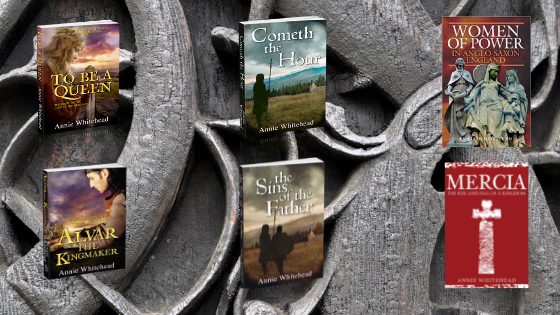I recently had cause to research the tale about the supposed killing of the last wolf in England and thought that folklore, generally, would be a good topic for a blog post.
Well, yes and no. One book on my shelves is over 800 pages long, with about five or six tales or legends on each page!
I thought I'd narrow it down to my favourites, one related to each part of history, from pre-Roman times to the seventeenth century, all to do with people, rather than beasts. And all very noisy!
The Lost Warriors
Hockwold, in the East Anglian Fens, was a burial place for three separate hoards of pewter items dating from Roman times. They were crushed and dismantled, giving rise to speculation that they were deliberately buried as some kind of offering.
They were discovered in the 1960s, but long before that time, the Hockwold Fens were said to be haunted by ancient warriors. Their battle cries could be heard, sounding loud across the fenland. Perhaps they were British warriors, Iceni maybe, fighting the Roman invaders?
 |
| Some of the Hockwold Pewter |
The Shrieking Pits
Between 850 and 110o, iron workings between Aylmerton and West Runton Heath in Norfolk left depressions in the fields. Slag from the furnaces found their way into the walls of nearby Saxon Churches. Shrieks ring out in the dark night, near St John's Church, utterances of a ghostly woman who is searching among the hollows for the body of her baby.
Legend has it that her husband buried the child in one of the pits, as well as murdering his wife. She now wanders, searching, for she does not know which hollow contains her child. As she looks into each of the holes, she shrieks with despair as it reveals itself to be empty.
 |
| St John's Church, Aylmerton |
Wild Edric
Sometimes it's not the spirits of dead people that inspire these tales. The Vita Haroldi, a glorified celebration of the life of Harold Godwineson, last English king of pre-Conquest England, suggests that Harold did not die at Hastings, and later sources suggest that he lived until he was over 150 years old.
More fantastical yet, was Edric, a Shropshire man who did survive the Conquest, and fought William as a rebel. He, apparently, was still alive in the nineteenth century, living in the mines under the Shropshire hills. His noise was a knocking sound, which would tell the miners where the best lodes were. He would ride out to foretell war, and was seen riding with his wife, Lady Godda, just before the outbreak of the Crimean war.
 |
| Snailbeach, Shropshire - note the mine chimney. Photo Humphrey Bolton |
Screams at Castle Rising
I've visited Castle Rising many times. I used to drive past it on my way to work. For a time, it was the 'home' of Isabella, wife of Edward II. Froissart, and fourteenth century chronicler, says that her son, Edward III, imprisoned her there, after the execution of her lover, Mortimer.
It is said that she went mad from loneliness and that her screams could be heard as she wandered the battlements, lamenting her fate. In fact, she was not a prisoner, although she certainly lived there for periods, as it was one of her own properties, but she actually died in Hertford Castle. Her son allowed her £3,ooo, rising to £4,000 per year, so it's likely that far from wandering the Norman keep as a prisoner, she lived a comfortable life.
 |
| Castle Rising |
Footsteps at Husbands Bosworth
The ghost of a Protestant lady prowls the hall at Husbands Bosworth in Leicestershire and her footsteps can be heard loud and clear as she wanders, unable to settle. She suffers remorse for not allowing a Catholic priest to attend a dying servant. Elsewhere in the hall, a stain on the floor remains permanently damp, and it is allegedly there as a result of communion wine, or blood, being spilled when a priest escaped Cromwell's men.
Whether this is a reference to Thomas Cromwell of the Reformation, or Oliver Cromwell who was responsible for the destruction of churches in the seventeenth century, is not clear. Our poor lady would have been more reluctant, one assumes, to summon a Catholic priest during the reign of the latter. But the former was known as Hammer of the Monks, so we cannot be sure who it was who would have taken punitive measures against her.
 |
| Bosworth Hall - photo Richard Williams |
This is just a tiny sample of the tales that survive. They appeal to me because of their historical context, and because if I'm going to encounter a ghost, I'd like it to make some kind or warning sound first!
Further reading/bibliography:~
Froissart's Chronicle
Vita Haroldi
The Old Stories - Kevin Crossley-Holland
The Lore of the Land - Westwood & Simpson
Folklore of the Welsh Border - Jaqueline Simpson
Norfolk Ghosts & Legends - Polly Howat
Tales of Old Norfolk - Polly Howat
Norfolk - A Ghosthunter's Guide - Neil Storey
Folk Stories and Heroes of Wales, Vols I&II - John Owen Huws

No comments:
Post a Comment